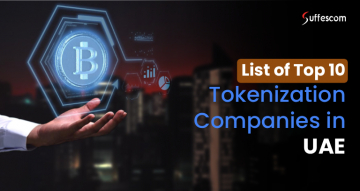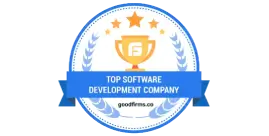Asset Tokenization Development Cost in 2025: Complete Pricing Breakdown & Guide

Asset tokenization is redefining how the world perceives value. From real estate to art, businesses are rapidly converting tangible and intangible assets into blockchain-based tokens. But one critical question remains—how much does it cost to develop an asset tokenization platform in 2025?
If you’re planning to step into this digital revolution, understanding the cost components, influencing factors, and future trends is essential. In this guide, we break down every element that determines the cost of an asset tokenization platform and offer you a clear path to budgeting your project.
Why Understanding Tokenization Costs Matters
Asset tokenization isn’t just a trend—it’s a game-changing innovation transforming investment, ownership, and trading. Whether you're tokenizing real estate, company shares, or luxury goods, the asset tokenization platform development cost plays a vital role in shaping your go-to-market timeline, features, and compliance.
Let’s decode what goes into these costs and how much budget you really need.
Key Factors That Affect Asset Tokenization Platform Cost
The asset tokenization development cost involves several critical factors. Let’s break them down:
1. Platform Complexity & Features
The complexity of your platform significantly affects the tokenization platform development cost. A primary platform with simple features will cost less than an advanced platform with integrated functionalities. Complexity includes multi-asset support, compliance modules, and advanced security protocols.
- Basic vs. Advanced Features: A fundamental platform might only support basic functionalities like token issuance and transfer. In contrast, an advanced platform could include multi-asset support, sophisticated trading mechanisms, and integration with external financial systems.
- Multi-Asset Support: Platforms that support multiple types of assets, such as real estate, securities, or commodities, require more intricate design and coding, increasing the development cost.
- Compliance Modules: Incorporating compliance features like AML and KYC adds more complexity. These modules must be integrated seamlessly into the platform, which involves additional expertise and related costs.
- Security Protocols: Advanced security measures, including multi-signature wallets, encryption, and regular security audits, further increase the complexity and cost.
Start Your Asset Tokenization Journey with Confidence
Whether you need a basic MVP or a full-featured solution, we provide custom-built platforms tailored to your goals.
2. Blockchain & Technology Stack
The choice of technology stack impacts the overall cost of tokenization development. Opting for a blockchain with high scalability and security, such as Ethereum or Hyperledger, can be more expensive. Additionally, integrating third-party services like Oracles or identity verification systems can further influence costs.
- Blockchain Selection: Opting for a high-performance blockchain like Ethereum or Hyperledger might be more costly due to its advanced features and scalability. Ethereum’s robust ecosystem and innovative contract capabilities come at a premium compared to less complex blockchain solutions.
- Third-Party Integrations: Integrating third-party services, such as Oracles for real-world data or identity verification systems, adds to the cost. These integrations require additional development time and may involve licensing fees.
- Scalability and Security: Choosing a technology stack with high scalability and security features can be more expensive. However, it ensures that the platform can handle a large volume of transactions securely and efficiently.
3. Development Team Expertise
The development team's expertise determines the cost of asset tokenization development. Hiring experienced blockchain developers, UI/UX designers, and cybersecurity experts can be costly. Your team's geographical location also affects the overall expense. For instance, developers in North America or Western Europe typically charge more than those in Eastern Europe or Asia.
- Skill Set: Hiring experienced blockchain developers, UI/UX designers, and cybersecurity experts is essential but costly. Due to their specialized skills and knowledge, experienced professionals command higher salaries.
- Geographical Location: The development cost varies based on the team’s location. Developers in Dubai, North America or Western Europe often charge $100 to $250 per hour, whereas those in Eastern Europe or Asia might charge $50 to $150 per hour. Outsourcing to regions with lower labor costs can reduce expenses significantly.
- Team Size and Structure: The size and composition of your team also affect costs. A larger team with specialized roles, including project managers and quality assurance testers, will increase the overall development budget.
4. Legal Compliance & Regulatory Requirements
Compliance with regulatory standards is vital in asset tokenization. Developing features to ensure adherence to legal requirements will add to the cost. These features may include anti-money laundering (AML) checks, know-your-customer (KYC) procedures, and other regulatory compliance measures.
- Regulatory Compliance: Developing features to comply with regulations such as AML and KYC involves additional costs. This includes implementing procedures for identity verification, transaction monitoring, and record-keeping.
- Legal Consultation: Legal experts must navigate the complex regulatory landscape, draft legal agreements, and ensure the platform adheres to relevant laws. Legal consultation fees can add between $10,000 and $50,000 to the budget.
- Documentation and Reporting: Creating comprehensive documentation and reporting tools to meet regulatory standards adds to the overall cost. This ensures transparency and accountability in the platform’s operations.
5. Integration and Testing
Integrating your platform with existing financial systems and conducting rigorous testing to ensure stability and security contribute to the total development cost. The more thorough the integration and testing phases, the higher the expense.
- System Integration: Integrating the tokenization platform with other financial systems, such as payment gateways and trading platforms, can be complex and costly. This process involves ensuring seamless data exchange and compatibility between systems.
- Testing Phases: Rigorous testing is necessary to identify and resolve bugs, security vulnerabilities, and performance issues. Depending on the platform's complexity, testing phases include unit testing and integration testing.
- Quality Assurance: Comprehensive QA processes ensure the platform functions correctly under various conditions. Investing in quality assurance is crucial for maintaining platform reliability and user satisfaction.
6. Maintenance and Support
Post-launch support and maintenance are ongoing costs that need to be considered. Regular updates, security patches, and customer support services contribute to the long-term expenses of your asset tokenization platform.
- Updates and Patches: Regular updates and security patches are necessary to keep the platform running smoothly and securely. These updates address vulnerabilities and improve functionality based on user feedback.
- Customer Support: Customer support services are essential for addressing user issues and maintaining platform integrity. Support costs can vary based on the level of service provided and the volume of user inquiries.
- Ongoing Maintenance: This involves monitoring the platform’s performance, fixing bugs, and making enhancements, depending on the platform's scale and complexity.
Get an Cost Estimate of an Asset Tokenization Platform Today!
Whether you’re building for real estate, equity, or commodities we help you launch securely and cost-effectively.
Cost Breakdown of Asset Tokenization Platform Development
Now that we’ve covered the main factors let's break down the typical cost components used to develop asset tokenization.
| Development Phase | Estimated Cost Range (USD) |
| Research & Planning | Free |
| UX and UI | $3,000 – $10,000 |
| Frontend | $4,500 – $15,000 |
| Backend | $6,000 – $20,000 |
| Annual Maintenance & Support | $1,500 – $5000 |
1. Initial Planning and Design
The initial planning phase includes requirement gathering, prototyping, and design. More complex platforms with intricate designs and detailed planning can increase this cost.
2. Development
The development phase is where most of the expenses are incurred. Here’s a rough estimate based on complexity:
- Primary Platform: $15,000 to $50,000
- Intermediate Platform: $50,000 to $100,000
- Advanced Platform: $100,000 and above
The cost varies depending on the technology stack, team expertise, and the features you want to incorporate.
3. Compliance and Legal Integration
Integrating compliance measures can add up cost between $10,000 and $15,000. This includes developing AML/KYC features and legal consultations to ensure your platform meets regulations.
4. Integration and Testing
Integrating existing systems and thorough testing can add up your cost of developing an asset tokenization platform that ranges from $15,000 to $20,000. This phase ensures that your platform functions seamlessly with other financial systems and is bug-free.
5. Maintenance and Support
Ongoing maintenance and support can cost approximately 10-15% of the initial development cost annually. This covers regular updates, security patches, and customer support.
Future Trends and Cost Considerations
The asset tokenization space is rapidly evolving. As technology advances and regulations become more defined, the cost of developing asset tokenization may fluctuate. Keeping an eye on emerging trends can help you anticipate future costs and make informed decisions.
1. Increased Automation: Automation in compliance and reporting could reduce costs in the future. Advanced tools may streamline the development process, lowering tokenization development costs.
2. Blockchain Innovations: New blockchain technologies may offer cost-effective solutions. Staying updated on technological advancements will help you choose the most cost-efficient options.
3. Regulatory Changes: Evolving regulations impact compliance costs. Being proactive about regulatory changes can help you budget effectively and avoid unexpected expenses.
Conclusion
Cost considerations for asset tokenization development are crucial for anyone venturing into this space. The price depends on various factors, including platform complexity, technology stack, team expertise, and compliance requirements. By breaking down these components, you can better estimate the cost and plan your budget accordingly.
As you move forward, consider these factors carefully and stay informed about industry trends. With the right approach and a clear vision of the costs involved, you can successfully navigate the world of asset tokenization and leverage its benefits for your business.
Whether you’re a startup launching your MVP or an enterprise building a full-fledged ecosystem, we can guide you every step of the way.
FAQs
1. How much does it cost to develop an asset tokenization platform?
The development cost typically ranges from $15,000 to over $50,000, depending on platform features, security, legal compliance, and technology stack.
2. What factors affect the cost of tokenization platforms?
Key cost drivers include platform complexity, blockchain type, development team location, integration needs, and legal compliance requirements like KYC/AML.
3. Is asset tokenization profitable for businesses?
Yes. Tokenization enables liquidity, transparency, and fractional ownership, which helps businesses unlock new revenue streams from previously illiquid assets.
4. How long does it take to build a tokenized asset platform?
Development time varies from 3 to 9 months, depending on the complexity, team experience, compliance integration, and testing phases.
5. Can I reduce costs by using a white-label asset tokenization solution?
Absolutely. White-label tokenization platforms reduce custom development costs significantly while still providing essential features and fast deployment.







